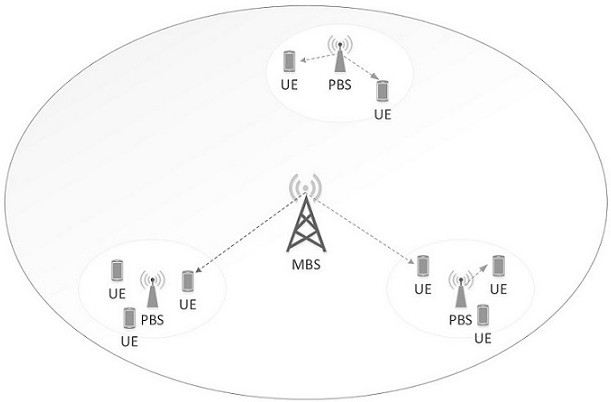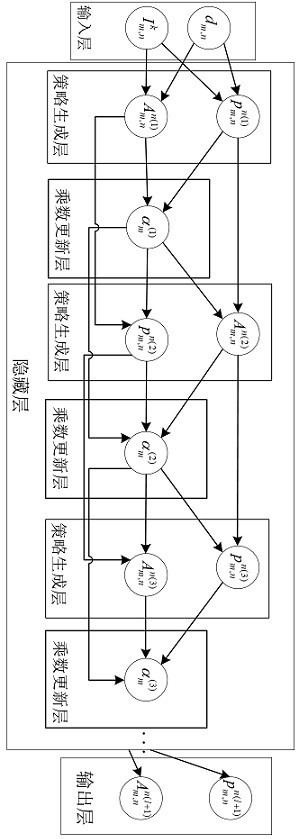Heterogeneous network resource allocation method based on reinforcement learning
A heterogeneous network and resource allocation technology, applied in the field of heterogeneous network resource allocation based on reinforcement learning, can solve problems such as unavailability
- Summary
- Abstract
- Description
- Claims
- Application Information
AI Technical Summary
Problems solved by technology
Method used
Image
Examples
Embodiment Construction
[0069] The present invention will be further described below in conjunction with the accompanying drawings.
[0070] Such as figure 1 The two-layer heterogeneous cellular network shown includes M base stations and N mobile users, in which the macro base station MBS has , micro base station PBS has and satisfy . Each cell base station is located in the center of each cell, and its authorized mobile users are randomly distributed in the cell. It is assumed that there is an overlapping area between every two adjacent small cells. It is assumed that each communication terminal is equipped with an antenna for signal transmission. In order to maximize the use of radio resources and avoid trivial cases, the frequency reuse factor is set to 1. To avoid intra-cell interference, it is assumed that each user in each cell is allocated only one subcarrier, so all signals are on the same subcarrier The cells in the carrier are orthogonal. The N orthogonal subcarriers used in a cel...
PUM
 Login to View More
Login to View More Abstract
Description
Claims
Application Information
 Login to View More
Login to View More - R&D
- Intellectual Property
- Life Sciences
- Materials
- Tech Scout
- Unparalleled Data Quality
- Higher Quality Content
- 60% Fewer Hallucinations
Browse by: Latest US Patents, China's latest patents, Technical Efficacy Thesaurus, Application Domain, Technology Topic, Popular Technical Reports.
© 2025 PatSnap. All rights reserved.Legal|Privacy policy|Modern Slavery Act Transparency Statement|Sitemap|About US| Contact US: help@patsnap.com



